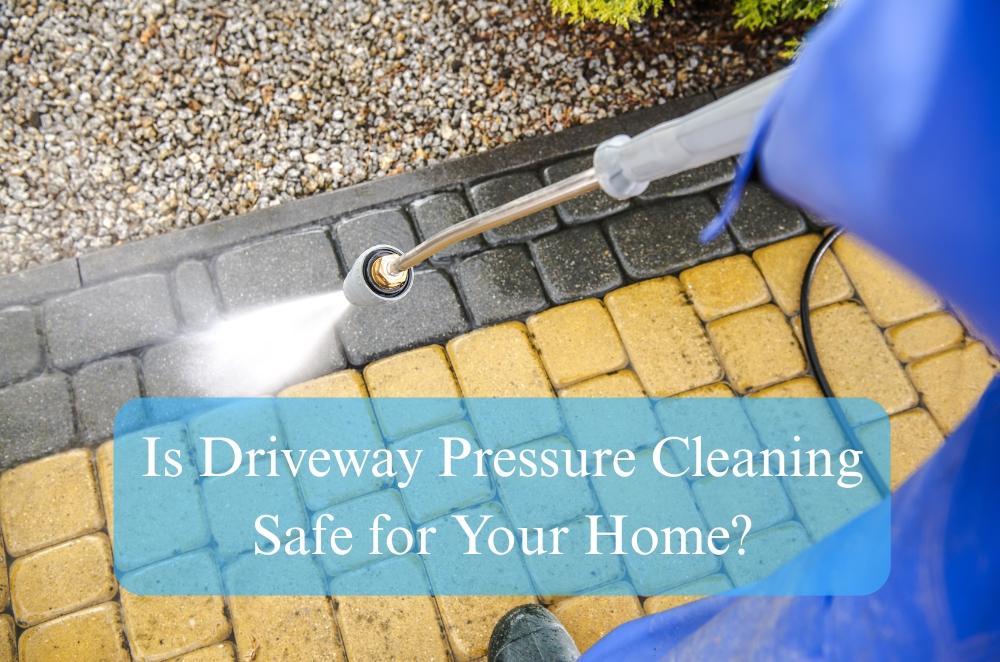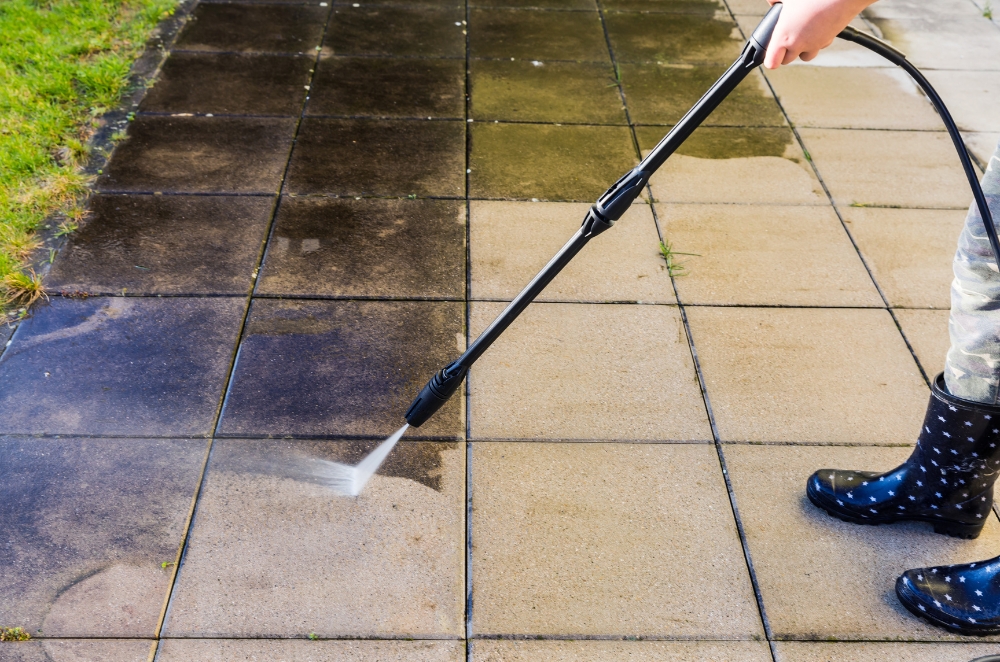Is Driveway Pressure Cleaning Safe for Your Home?

Most people don’t think much about their driveway until one day it just looks, well, tired. The marks and patches build up slowly, and before you know it, the whole thing feels shabby. Pressure cleaning seems like the simple answer—blast it clean in an afternoon, job done. Except it’s rarely that straightforward. Different surfaces react in ways you might not expect, especially if they’ve been around a while.
Doesn’t really matter whether you’ve got plain concrete or decorative pavers or something in between. It’s worth working out what you’re dealing with before you start. A lot of homeowners end up turning to driveway pressure cleaning Sydney locals trust, because sometimes a DIY clean, no matter how careful, leaves a bigger mess.
Why surface type matters more than you’d think
Concrete looks pretty tough, but that doesn’t mean it all holds up the same way. Some driveways were poured decades ago and have taken more punishment than you’d realise. Others are coated with sealers or coloured finishes that don’t react well to too much pressure.
A few things to check before you start:
-
Whether the surface has been sealed or painted
-
If there are any hairline cracks, you might not notice
-
How old is the concrete or paving?
-
Whether you’ve got softer stone that chips easily
It doesn’t hurt to take a moment to see what you’ve got. If it’s older concrete or sandstone or anything decorative, you’ll need to tread a bit more carefully.
Common pressure cleaning myths
There’s this idea that blasting away at full pressure is the most effective approach. It feels logical—more force must mean cleaner. But it can actually do the opposite, scarring the surface or driving water into cracks you didn’t even know were there.
Some other assumptions worth questioning:
-
Any nozzle will do the trick if you angle it right
-
Bleach fixes everything
-
Pavers never need sealing afterwards
-
You can ignore how water drains off
Even if you mean well, it doesn’t take much to create marks or loosen grout. That’s why plenty of people prefer to get someone in who knows how to adjust settings instead of relying on guesswork.
Thinking about safety, not just the clean look
It’s tempting to focus on making the driveway look spotless, but there’s a flip side. Cleaning leaves behind a film that can turn slick, especially when you use detergents or work on smoother surfaces.
The moment it looks clean, you assume it’s ready to walk on. But it isn’t always. Freshly washed concrete can be more dangerous than you expect. The slip hazards from cleaning don’t just come from leftover soap. Grit and fine residue can hang around even after rinsing.
If you’ve got kids darting about or visitors dropping in, it’s worth letting the area dry properly before you walk all over it.
The hidden impact of water pressure on your property
Sometimes the real issues aren’t visible until much later. A strong jet of water can force moisture under pavers or into joints. Leave it long enough, and you get mould patches or paving that shifts out of place.
Potential problems you might not see straight away:
-
Weeds are coming up through cracks months later
-
Mould is growing where water has been trapped
-
Pavers loosening or shifting over time
-
Erosion around the edges of slabs
Just spending a bit of time clearing out leaves, checking where the runoff goes, and making sure you’re not forcing water where it doesn’t belong helps more than most folks realise.
The case for using the right equipment
Hiring the biggest cleaner available seems like the easy fix. But the real benefit comes from matching the machine to the surface. It’s about finding that balance—enough pressure to remove dirt but not so much that you damage what’s underneath.
The good operators I’ve watched bring a few machines and switch nozzles depending on what they’re tackling. They’ll test a small area first, just to be sure. That little bit of caution saves a lot of headaches.
It’s a bit like sanding an old deck. You push too hard, and you’ll never quite fix the patches that appear.
How to keep things looking fresh for longer
Cleaning is one part. The other is stopping the grime from settling in again. Sealing helps, especially if you’ve got anything decorative. It keeps stains from soaking in and makes cleaning easier next time.
Small habits that keep things tidy:
-
Give it a sweep once a week
-
Rinse off the oil before it dries out
-
Keep leaves out of the gutters
-
Trim back plants that drop debris
None of these takes long. But they can mean you won’t need to call someone again for ages.
Deciding when to call in a professional
Some driveways are fine to tackle yourself if you’re careful and have a bit of time. But if it’s large, stained in patches, or you’re not sure what kind of surface you’re dealing with, bringing in someone who does this every day can be the easier route.
It isn’t only about getting it clean. A professional can look at your driveway and know how much pressure it can handle, which detergents won’t stain, and how long you should leave it before you walk on it.
If you’re weighing up what that involves, you might find it useful to read about the process in a safe driveway cleaning guide that lays out how proper prep and finishing help avoid slip hazards and damage.
Weighing the risks of DIY
I’ve met a fair few folks who figured they’d save cash by handling everything themselves. Sometimes it goes fine. Other times, you’re left with streaks, chipped edges, and the need to call a pro anyway.
Things to consider before you start:
-
Are you comfortable testing and changing nozzles?
-
Do you know how to adjust the settings safely?
-
Will you spot if something’s going wrong early?
-
What happens if something breaks?
A bit of honest thinking saves a lot of backtracking.
What to expect when the job’s done
The driveway always looks better straight after a clean, but it can feel a bit odd underfoot. Sometimes it’s smoother or sticky until it dries out fully.
Try not to park anything heavy or drag bins across it too soon. Giving it a day or two helps the surface settle without scuffs or fresh marks. If you’ve added sealant, check the instructions—some take longer to cure properly.
Final thoughts
Pressure cleaning a driveway doesn’t have to be a headache. A little research, some planning, and knowing when to ask for help go a long way.
If you’re not sure, it’s worth a quick chat with someone who’s handled similar jobs before. A bit of preparation now saves you time and fixes problems later. Over time, you’ll figure out exactly what your driveway needs to stay looking sharp.
- Information Technology
- Office Equipment and Supplies
- Cars and Trucks
- Persons
- Books and Authors
- Tutorials
- Art
- Causes
- Crafts
- Dance
- Drinks
- Film
- Fitness
- Food
- Oyunlar
- Gardening
- Health
- Home
- Literature
- Music
- Networking
- Other
- Party
- Religion
- Shopping
- Sports
- Theater
- Wellness



